Authors & editors
ANU Press has collaborated with a diverse range of authors and editors across a wide variety of academic disciplines. Browse the ANU Press collection by author or editor.

East Asia Forum Quarterly: Volume 7, Number 1, 2015 »
Publication date: April 2015
East Asia Forum Quarterly grew out of East Asia Forum (EAF) online, which has developed a reputation for providing a platform for the best in Asian analysis, research and policy comment on the Asia Pacific region in world affairs. EAFQ aims to provide a further window onto research in the leading research institutes in Asia and to provide expert comment on current developments within the region. The East Asia Forum Quarterly, like East Asia Forum online, is an initiative of the East Asia Forum (EAF) and its host organisation, the East Asian Bureau of Economic Research (EABER) in the Crawford School of Economics and Government in the College of Asia & the Pacific at The Australian National University.
Download for free
Not available for purchase

Innamincka Talk: A grammar of the Innamincka dialect of Yandruwandha with notes on other dialects »
Authored by: Gavan Breen
Publication date: April 2015
Innamincka Talk: A grammar of the Innamincka dialect of Yandruwandha with notes on other dialects is one of a pair of companion volumes on Yandruwandha, a dialect of the language formerly spoken on the Cooper and Strzelecki Creeks and the country to the north of the Cooper, in the northeast corner of South Australia and a neighbouring strip of Queensland. The other volume is entitledInnamincka Words.
Innamincka Talk is the more technical work of the two and is intended for specialists and for interested readers who are willing to put some time and effort into studying the language.Innamincka Words is for readers, especially descendants of the original people of the area, who are interested in the language, but not necessarily interested in its more technical aspects. It is also a necessary resource for users of Innamincka Talk.
These volumes document all that could be learnt from the last speakers of the language in the last years of their lives by a linguist who was involved with other languages at the same time. These were people who did not have a full knowledge of the culture of their forebears, but were highly competent, indeed brilliant, in the way they could teach what they knew to the linguist student.

Innamincka Words: Yandruwandha dictionary and stories »
Edited by: Gavan Breen
Publication date: April 2015
Innamincka Words: Yandruwandha dictionary and stories is one of a pair of companion volumes on Yandruwandha, a dialect of the language formerly spoken on the Cooper and Strzelecki Creeks and the country to the north of the Cooper, in the northeast corner of South Australia and a neighbouring strip of Queensland. The other volume is entitled Innamincka Talk: a grammar of the Innamincka dialect of Yandruwandha with notes on other dialects. Innamincka Words is for readers, especially descendants of the
original people of the area, who are interested in the language. It is also a necessary resource for users of the more technical Innamincka Talk.
These volumes document all that could be learnt from the last speakers of the language in the last years of their lives by a linguist who was involved with other languages at the same time. These were people who did not have a full knowledge of the culture of their forebears, but were highly competent, indeed brilliant, in the way they could teach what they knew to the linguist student.

The Representation of Science and Scientists on Postage Stamps »
A science communication study
Authored by: Christopher B. Yardley
Publication date: February 2015
The Representation of Science and Scientists on Postage Stamps examines how the postal authorities of the world have developed unique techniques to portray science and scientists in order to convey a message behind the stamp issue. It is a multi-disciplinary examination that investigates visual representation, semiotics, science, science history and politics, amongst other issues.
The author introduces and describes a technique for looking at how and why images may have been chosen. Is the image a mirror reflecting a known reality or is it a lens to challenge, to prompt further thought or action? He also hypothesises that the Internet created a real change to science communication, influencing the way images of science were used. The stamp message changed from that of pursuing a public understanding approach to an awareness of science with its increasing contextual content.
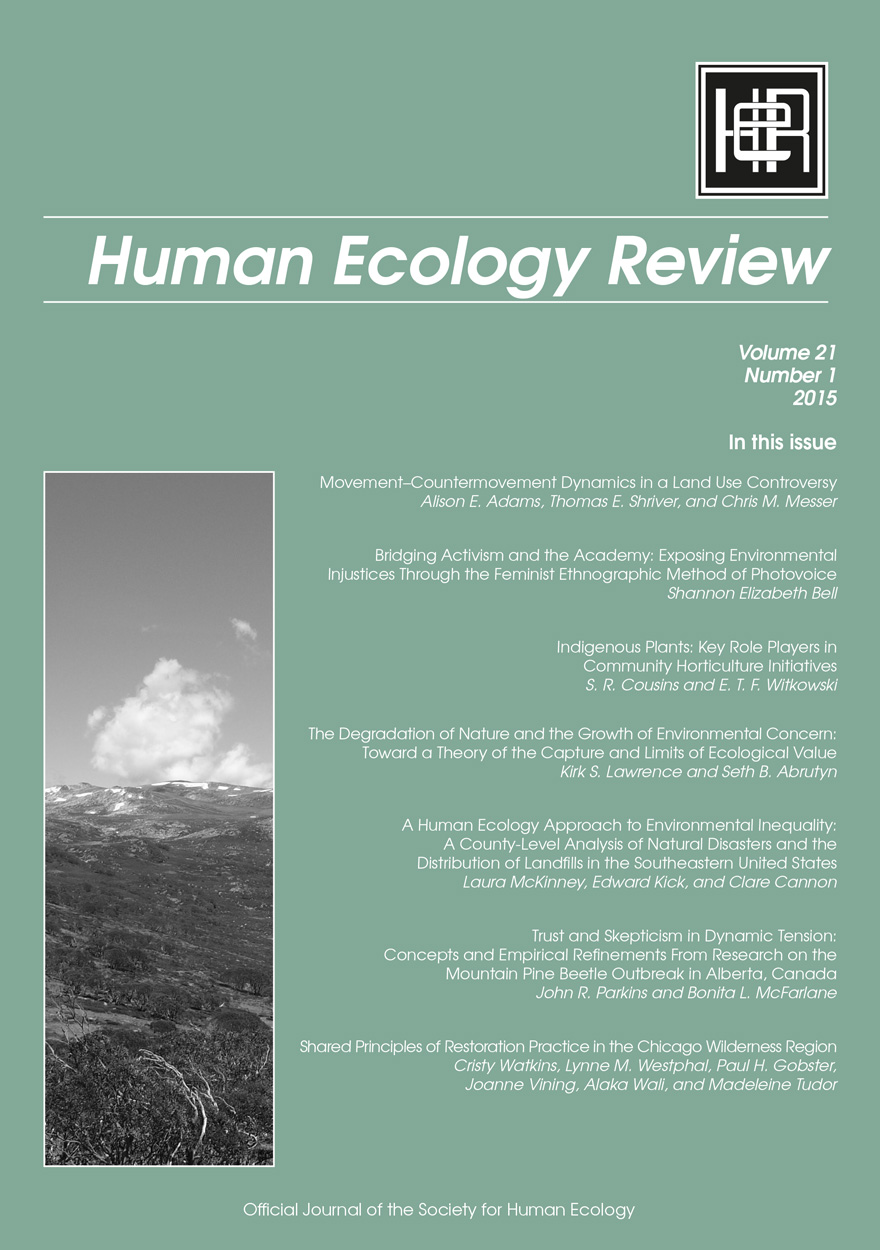
Human Ecology Review: Volume 21, Number 1 »
Publication date: February 2015
Human Ecology Review is a semi-annual journal that publishes peer-reviewed interdisciplinary research on all aspects of human–environment interactions (Research in Human Ecology). The journal also publishes essays, discussion papers, dialogue, and commentary on special topics relevant to human ecology (Human Ecology Forum), book reviews (Contemporary Human Ecology), and letters, announcements, and other items of interest (Human Ecology Bulletin). Human Ecology Review also publishes an occasional paper series in the Philosophy of Human Ecology and Social–Environmental Sustainability.
Download for free
Not available for purchase
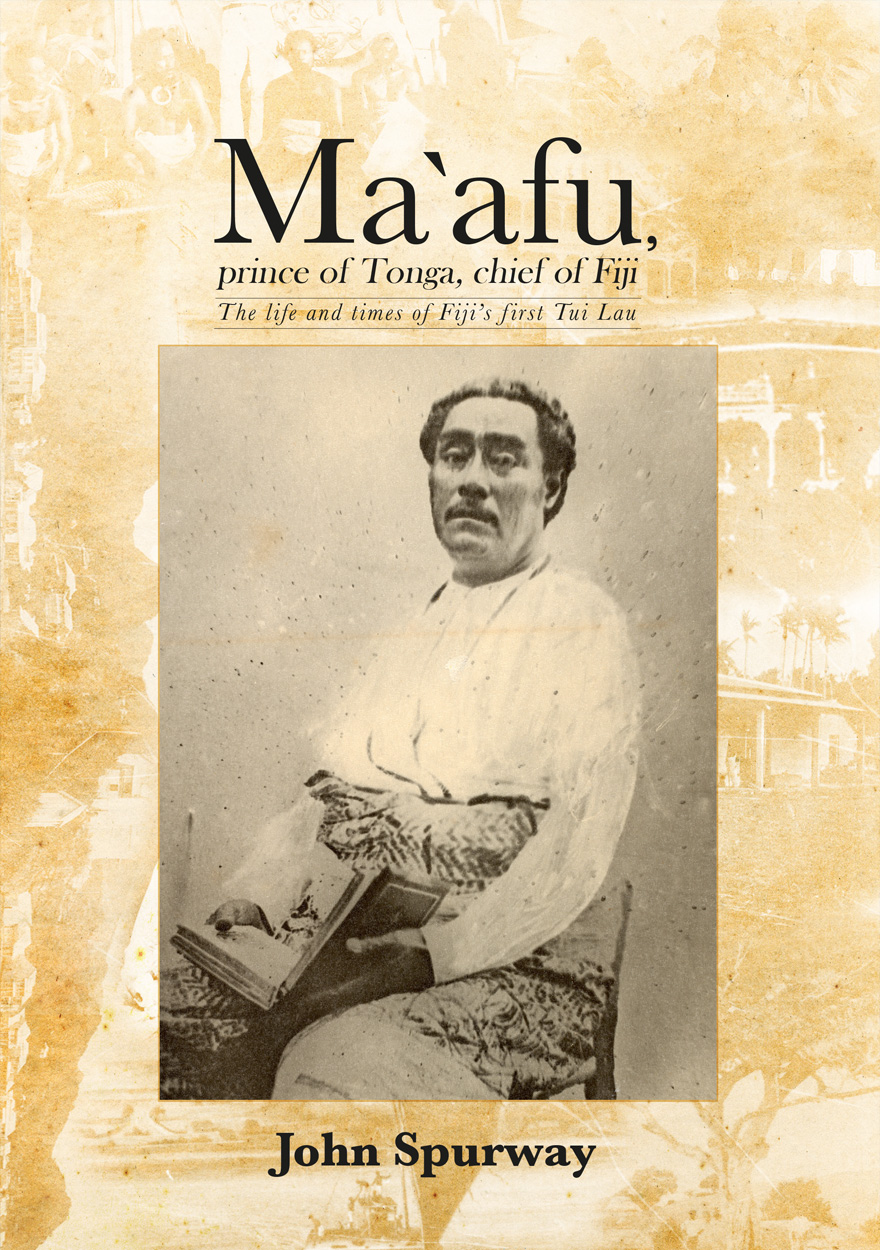
Ma`afu, prince of Tonga, chief of Fiji »
The life and times of Fiji’s first Tui Lau
Authored by: John Spurway
Publication date: February 2015
Enele Ma`afu, son of Aleamotu`a, Tu`i Kanokupolu, grew up during a time of unprecedented social and political change in Tonga following the advent of Christianity. Moving to Lau, Fiji, in 1847 when he was about 21, he skilfully exploited kinship links to establish a power base there and in eastern Cakaudrove. His achievements were recognised in 1853 when his cousin King Tupou I appointed Ma`afu as Governor of the Tongans in Fiji.
Acting as a putative champion of the lotu, Ma`afu undertook successful military campaigns elsewhere in Fiji and, after adding the Yasayasa Moala and the Exploring Isles to the nascent Lauan state, he was able to establish the Tovata ko Lau, a union of Lau, Cakaudrove and Bua, with himself as head. His power was formally recognised in 1869 when the Lauan chiefs appointed him as Tui Lau, a new title in the polity of Fiji. Ma`afu was now able to challenge Cakobau for the mastery of Fiji.
After serving as Viceroy during the farcical planter oligarchy known as the Kingdom of Fiji, Ma`afu underwent a severe humiliation when, in order to maintain his power in Lau, he was forced to accede to the wishes of Fiji’s other great chiefs in offering their islands to Great Britain. He would end his days as Roko Tui Lau, a ‘subordinate administrator’ in the Crown Colony of Fiji, presiding over a province characterised by corruption and maladministration but where the legacy of his earlier innovative land reforms has endured.

The Tools of Owatatsumi »
Japan’s Ocean Surveillance and Coastal Defence Capabilities
Authored by: Desmond Ball, Richard Tanter
Publication date: January 2015
Japan is quintessentially by geography a maritime country. Maritime surveillance capabilities – underwater, shore-based and airborne – are critical to its national defence posture. This book describes and assesses these capabilities, with particular respect to the underwater segment, about which there is little strategic analysis in publicly available literature.
Since the end of the Cold War, Chinese oceanographic and navy vessels have intruded into Japanese waters with increasing frequency, not counting their activities in disputed waters such as around the Senkaku (Diaoyu) Islands and Okinotorishima where China and Japan have overlapping territorial claims. These intrusions have increasingly involved warships, including submarines, sometimes acting quite aggressively.
Japan maintains an extraordinary network of undersea hydrophone arrays, connected to shore-stations which are typically equipped with electronic intelligence (ELINT) systems, for monitoring, identifying and tracking submarine and surface traffic in its internal straits and surrounding seas. Some parts of this network are operated jointly with, and are of crucial importance to, the US Navy.
Japan’s superlative submarine detection capabilities would be of decisive advantage in any submarine engagement. But the relevant facilities are relatively vulnerable, which makes them very lucrative targets in any conflict. This introduces compelling escalatory dynamics, including the involvement of US forces and possible employment of nuclear options.

Aboriginal History Journal: Volume 38 »
Edited by: Shino Konishi
Publication date: January 2015
Volume 38 features a special section on Western Australian Aboriginal history. Clint Bracknell translates and contextualises nineteenth-century Noongar songs. Amanda Nettelbeck considers the role of magistrates and justices of the peace in the ‘frontier legal networks’ of the Pilbara and Kimberley regions. Anne Scrimgeour traces the changing approach to the administration of Aboriginal people in the twentieth-century north-west through the biography of Laurie O’Neill, a former mounted policeman and travelling inspector. Craig Muller studies the history of the Wongatha of the north-east part of the Goldfields. Muller finds that Elkin’s account of his brief 1930 visit to the region was used as evidence in the recent Wongatha native title case without sufficient historical contextualisation. Together, the papers draw on rich archival sources, complicate our understandings of the way in which Aboriginal lives were controlled in the past, and highlight Aboriginal voices and perspectives.
The other four articles exploring Aboriginal histories from other parts of Australia. Nicholas Brodie reconstructs the life of Dalrymple Briggs, a Vandemonian woman of mixed-descent. Noah Riseman examines the lives of three Aboriginal servicemen who all had media profiles as successful examples of assimilation. The other two articles examine different non-Indigenous accounts of Aboriginal people and culture. Marguerita Stephens critically examines discourses on Aboriginal infanticide in colonial Victoria. The history of tourist visits to Palm Island, an Aboriginal reserve in Queensland is the focus of Toby Martin’s article.
Aboriginal History Inc. is a publishing organisation based in the Australian Centre for Indigenous History, Research School of Social Sciences, The Australian National University, Canberra.
For more information on Aboriginal History Inc. please visit aboriginalhistory.org.au.
Download for free
Not available for purchase

Abbott's Gambit »
The 2013 Australian Federal Election
Publication date: January 2015
This book provides a truly comprehensive analysis of the 2013 federal election in Australia, which brought the conservative Abbott government to power, consigned the fractious Labor Party to the Opposition benches and ended the ‘hung parliament’ experiment of 2010–13 in which the Greens and three independents lent their support to form a minority Labor government. It charts the dynamics of this significant election and the twists and turns of the campaign itself against a backdrop of a very tumultuous period in Australian politics. Like the earlier federal election of 2010, the election of 2013 was an exercise in bipolar adversarial politics and was bitterly fought by the main protagonists. It was also characterised (again) by leadership changes on Labor’s side as well as the entry of new political parties anxious to deny the major parties a clear mandate. Moreover, the 2013 election continued the trend whereby an increasing proportion of the electorate chose not to vote for one of the main two political parties.
While the 2013 election delivered a clear victory to the Coalition in the Lower House, it simultaneously produced a much more mixed outcome in the Senate, where the Greens managed to record their largest ever representation and a new party, the Palmer United Party, initially secured three Senate positions at its first attempt (together with the election of Clive Palmer to a Queensland seat in the House of Representatives). With minor and micro parties also winning Senate seats amounting to a total of 18 Senators on the cross-benches, the Abbott government’s ability to govern and pass legislation was placed in some doubt. The 2013 election result suggested that far from ending the preceding tumultuous period of Australian politics, it merely served to prolong this era indefinitely.
The 2013 campaign was one of the longest on record, arguably commencing when the besieged Prime Minister Julia Gillard announced the date for the election in late January 2013 – then over seven months away. This unconventional tactic overshadowed the election from that date onwards – providing a definite timeline for Labor infighting, influencing the largely negative tactics of the Opposition, and encouraging new parties to proliferate to contest the election. This volume traces these formative influences on the campaign dynamics and explains the electoral outcome that occurred (including the 2014 re-election for the Western Australian Senate seats ordered by the High Court). Abbott’s Gambit includes insightful contributions from academic experts, campaign directors and electoral watchers, political advisers and professional psephologists. Contributors utilise a wide range of sources and approaches, including the Australian Election Survey, to provide a detailed analysis of this important federal election.
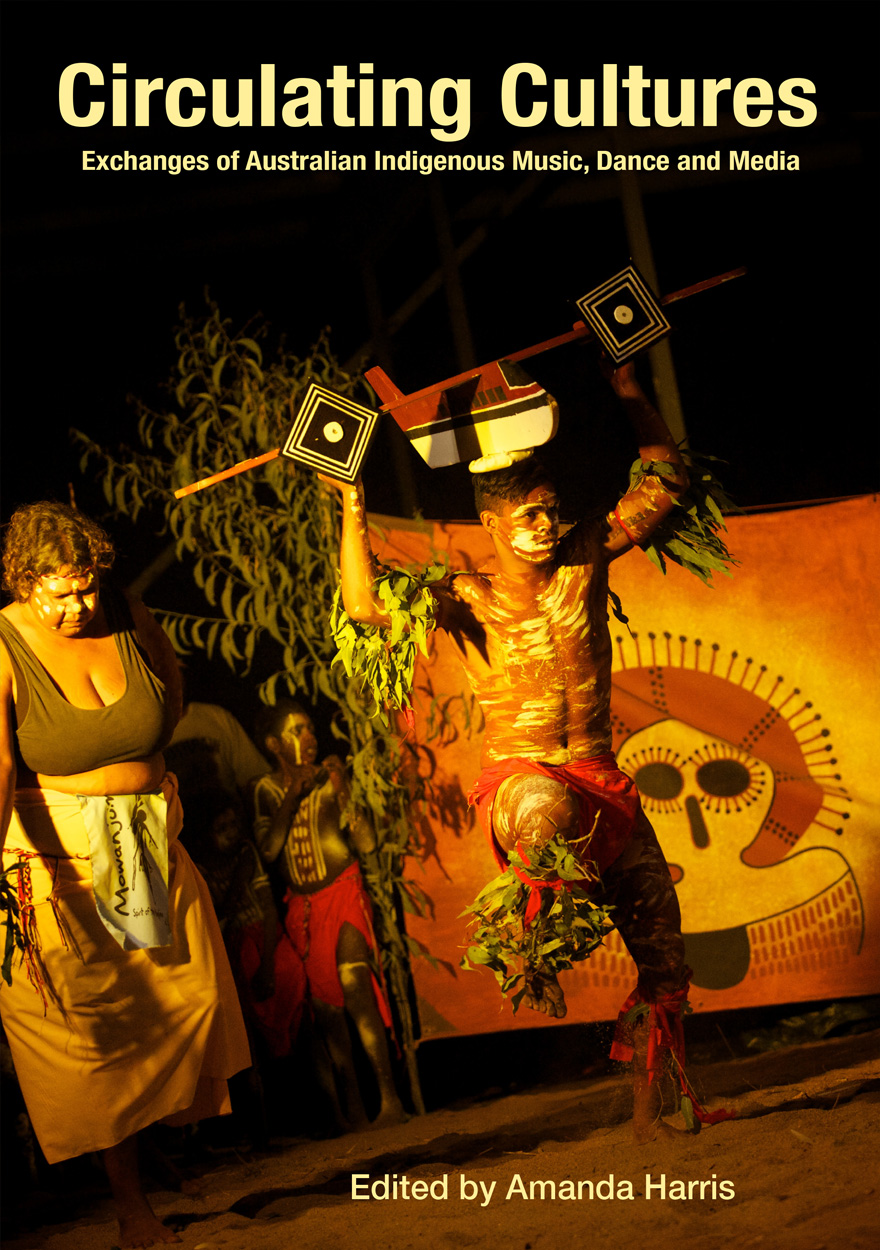
Circulating Cultures »
Exchanges of Australian Indigenous Music, Dance and Media
Edited by: Amanda Harris
Publication date: December 2014
Circulating Cultures is an edited book about the transformation of cultural materials through the Australian landscape. The book explores cultural circulation, exchange and transit, through events such as the geographical movement of song series across the Kimberley and Arnhem Land; the transformation of Australian Aboriginal dance in the hands of an American choreographer; and the indigenisation of symbolic meanings in heavy metal music. Circulating Cultures crosses disciplinary boundaries, with contributions from historians, musicologists, linguists and dance historians, to depict shifts of cultural materials through time, place and interventions from people. It looks at the way Indigenous and non-Indigenous performing arts have changed through intercultural influence and collaboration.

Global Warming and Climate Change »
What Australia knew and buried...then framed a new reality for the public
Authored by: Maria Taylor
Publication date: December 2014
1988: coming to grips with a terrifying global experiment
The Toronto conference statement made it clear that climate change would affect everyone. It called greenhouse gas atmospheric pollution an ‘uncontrolled, globally pervasive experiment whose ultimate consequences could be second only to nuclear war’. World governments were urged to swiftly develop emission reduction targets (The changing atmosphere: implications for global security, 1988).
Relevant to both Australian and overseas audiences, here is the untold story of how Australia buried its knowledge on climate change science and response options during the 1990s — going from clarity to confusion and doubt after arguably leading the world in citizen understanding and a political will to act in the late 1980s. ‘What happened and why’ is a fascinating exploration drawing on the public record of how a society revised its good understanding on a critical issue affecting every citizen. It happened through political and media communication, regardless of international scientific assessments that have remained consistent in ascribing causes and risks since 1990. How could this happen? The author examines the major influences, with lessons for the present, on how the story was reframed. Key have been values and beliefs, including economic beliefs, that trumped the science, the ability of changing political leaders and the mass media to set the story for the public, as well as the role of scientists’ own communication over time and the use and misuse of uncertainty.
For more information on this publication, plus book reviews, please see Maria Taylor’s author website.

Law and Democracy »
Contemporary Questions
Edited by: Glenn Patmore, Kim Rubenstein
Publication date: December 2014
Law and Democracy: Contemporary Questions provides a fresh understanding of law’s regulation of Australian democracy. The book enriches public law scholarship, deepening and challenging the current conceptions of law’s regulation of popular participation and legal representation. The book raises and addresses a number of contemporary questions about legal institutions, principles and practices:
How should the meaning of ‘the people’ in the Australian Constitution be defined by the High Court of Australia?
How do developing judicial conceptions of democracy define citizenship?
What is the legal right to participate in the political community?
Should political advisors to Ministers be subject to legal accountability mechanisms?
What challenges do applied law schemes pose to notions of responsible government and how can they be best addressed?
How can the study of the ritual of electoral politics in Australia and other common law countries supplement the standard account of democracy?
How might the ritual of the pledge of Australian citizenship limit or enhance democratic participation?
What is the conflict between legal restrictions of freedom of expression and democracy, and the role of social media?
Examining the regulation of democracy, this book scrutinises the assumptions and scope of constitutional democracy and enhances our understanding of the frontiers of accountability and responsible government. In addition, key issues of law, culture and democracy are revealed in their socio-legal context.
The book brings together emerging and established scholars and practitioners with expertise in public law. It will be of interest to those studying law, politics, cultural studies and contemporary history.

Name, Shame and Blame »
Criminalising Consensual Sex in Papua New Guinea
Authored by: Christine Stewart
Publication date: December 2014
Papua New Guinea is one of the many former British Commonwealth colonies which maintain the criminalisation of the sexual activities of two groups, despite the fact that the sex takes place between consenting adults in private: sellers of sex and males who have sex with males. The English common law system was imposed on the colonies with little regard for the social regulation and belief systems of the colonised, and in most instances, was retained and developed post-Independence, regardless of the infringements of human rights involved.
Now the HIV pandemic has thrown a spotlight, not altogether welcome, on the sexual activities of these two groups. In Papua New Guinea, a growing body of behavioural research has focused on such matters as individual sexual partnering, condom use and awareness of HIV. My work, however, has a different purpose. I chose the terms in the title to highlight a nexus which I believe exists between the criminal law and negative attitudes of society. At an international level, the argument has been put that decriminalising sex work and sodomy will facilitate HIV epidemic management, reducing the stigma and discrimination these groups encounter and making them easier to reach. I undertook my research therefore with the aim of gaining deeper understanding of the effects the current situation of criminalisation might have on the social lives of these criminalised people today, in the country generally and in Port Moresby the capital in particular, and whether these effects might provide evidence to support the argument for law reform.
This is a rich and well-researched study of the legal, social and moral issues surrounding the criminalisation of two forms of consensual sex…. A very impressive piece of work, it is extensively documented, relies on a wide range of material and makes a clear and coherent argument about the place of law in producing identities and exclusions…. The attention to change over time and the complexity of the ways in which sexual behaviour is enacted and punished is a particular strength of the book.
—Professor Sally Engle Merry, Anthropology, Law and Society, New York University
This book is an exceptional contribution to our knowledge of the nexus between the criminal law and negative attitudes of society, and what effects criminalization has on the social lives of prostitutes and males who have sex with males, and whether these effects might provide evidence to support the argument for law reform…. The author’s experience of Papua New Guinea allows her to comment in depth on such matters as the United Nations’ human rights approach to the HIV epidemic and their call to decriminalize all sexual acts between consenting adults…. She shows that criminal laws—with the help of the normative discourse of religion and media—underpin and legitimize high levels of stigma, discrimination and abuse of prostitutes and males who have sex with males…. The quality of the writing and general presentation are exceptional.
—Laura Zimmer-Tamakoshi, Truman State University (retired)

Medical Student Journal of Australia: Volume Five, Issue 1 »
Publication date: December 2014
The Medical Student Journal of Australia provides the medical school of The Australian National University with a platform for medical students to publish their work in a peer-reviewed journal, communicating the results of medical and health research information clearly, accurately and with appropriate discussion of any limitations or potential bias.
Download for free
Not available for purchase

Diversity in Leadership »
Australian women, past and present
Edited by: Joy Damousi, Kim Rubenstein, Mary Tomsic
Publication date: November 2014
While leadership is an over-used term today, how it is defined for women and the contexts in which it emerges remains elusive. Moreover, women are exhorted to exercise leadership, but occupying leadership positions has its challenges. Issues of access, acceptable behaviour and the development of skills to be successful leaders are just some of them.
Diversity in Leadership: Australian women, past and present provides a new understanding of the historical and contemporary aspects of Indigenous and non-Indigenous women’s leadership in a range of local, national and international contexts. It brings interdisciplinary expertise to the topic from leading scholars in a range of fields and diverse backgrounds. The aims of the essays in the collection document the extent and diverse nature of women’s social and political leadership across various pursuits and endeavours within democratic political structures.

Fiji: A Place Called Home »
Authored by: Daryl Tarte
Publication date: November 2014
Few people have been in the unique position of being able to observe and record the dramatic changes that have taken place in the islands of Fiji over the past 80 years than fourth-generation citizen, Daryl Tarte. He writes emotively, in great detail, about his personal experience of growing up on a remote island during the colonial era, when races were segregated, and white people lived an elite existence.
Following independence, he has been personally involved with many of the key economic, political and social activities that have evolved and enabled the nation to progress during the 20th century. These include the sugar industry, tourism, commerce and industry, religion, the media, women and of course, the coups.
His observations into the complexities of leadership in these areas of national development are fascinating and perceptive. Much of the story is told through the eyes of the many people of all races with whom he has interacted.
Fiji is made up of over 300 unique islands. Tarte has been to many of them, and in a final chapter he gives an insightful commentary of how different they all are.

In the Eye of the Beholder »
What Six Nineteenth-century Women Tell Us About Indigenous Authority and Identity
Authored by: Barbara Dawson
Publication date: November 2014
This book offers a fresh perspective in the debate on settler perceptions of Indigenous Australians. It draws together a suite of little known colonial women (apart from Eliza Fraser) and investigates their writings for what they reveal about their attitudes to, views on and beliefs about Aboriginal people, as presented in their published works. The way that reader expectations and publishers’ requirements slanted their representations forms part of this analysis.
All six women write of their first-hand experiences on Australian frontiers of settlement. The division into ‘adventurers’ (Eliza Fraser, Eliza Davies and Emily Cowl) and longer-term ‘settlers’ (Katherine Kirkland, Mary McConnel and Rose Scott Cowen) allows interrogation into the differing representations between those with a transitory knowledge of Indigenous people and those who had a close and more permanent relationship with Indigenous women, even encompassing individual friendship. More pertinently, the book strives to reveal the aspects, largely overlooked in colonial narratives, of Indigenous agency, authority and individuality.
For more information on Aboriginal History Inc. please visit aboriginalhistory.org.au.

The Plant Detective's Manual »
A research-led approach for teaching plant science
Authored by: Gonzalo M. Estavillo, Ulrike Mathesius, Michael Djordjevic, Adrienne Nicotra
Publication date: November 2014
If global challenges in food production and the impact of ever-declining biodiversity are to be tackled, every country will need plant biologists who have a deep understanding of plant morphology, physiology and genetics, and how these interact to affect plant function in changing environments. These scientists will also need the capacity to use an effective and powerful set of technologies and research strategies. To prepare and inspire our students to become that next generation of researchers and to instill a meaningful involvement in research we created an integrated set of laboratory investigations that we felt truly reflected the mysteries of plant biology and puzzle-solving processes that we had encountered in our research experience. Rather than a set of unconnected experimental activities, we created a series of closely related experiments that focused on solving ‘mysteries’ in the life of the plant Arabidopsis thaliana (thale cress). The activities charge students with finding the ‘suspect’ gene responsible for the specific phenotypes of an unknown Arabidopsis mutant, which are encountered when they expose the plants to different environmental stresses. This, we hoped, would give keen but inexperienced student scientists a realistic taste of the joys (and frustrations!) of plant science research.
Although thrilled by numerous university and national awards for our innovative teaching, we have been most excited by the interest in our ideas and experimental approaches from other plant science educators in Australia and overseas, who are also seeking to improve their plant biology curriculum and attract more students to plant sciences. We are thus proud to present this manual as a gift to our colleagues worldwide. Here you will find a detailed collection of state-of-the-art procedures in plant biology, as well as background information on more commonly used techniques, and tips for class preparation. The concepts and methods we present can be adapted to meet the specific needs and expertise of the teaching staff, and provide inspiration for scaling up for larger audiences, or simplifying for more junior classes. Through this publication, we hope to support our teaching colleagues in making a significant impact on improving the learning experience of plant biology students worldwide, and hope that we will motivate and inspire a new generation of plant detectives.

Power and International Relations »
Essays in Honour of Coral Bell
Edited by: Desmond Ball, Sheryn Lee
Publication date: November 2014
Coral Mary Bell AO, who died in 2012, was one of the world’s foremost academic experts on international relations, crisis management and alliance diplomacy. This collection of essays by more than a dozen of her friends and colleagues is intended to honour her life and examine her ideas and, through them, her legacy.
Part 1 describes her growing up during the Great Depression and the Second World War, her short-lived sojourn in the Department of External Affairs in Canberra, where she was friends with some of the spies who worked for Moscow, and her academic career over the subsequent six decades, the last three of which were at The Australian National University.
Most of Coral’s academic career was spent in Departments of International Relations. She was disdainful of academic theory, but as discussed in Part 2, she had a very sophisticated understanding of the subject. She was in many ways a Realist, but one for whom agency, in terms of ideas (the beliefs and perceptions of policy-makers) and institutions (including conventions and norms of behaviour), essentially determined events.
Part 3 is concerned with power politics, including such matters as Cold War competitions, crisis management, alliance diplomacy, and US and Australian foreign policies. She recognised that power politics left untrammelled was inevitably catastrophic, and was increasingly attracted to notions of Concerts of Power.
‘Coral would be touched by this collection of essays about her professional and personal life. The contributors offer honest, professional and insightful reviews of her many academic achievements and especially her ideas, many of them the forerunners of others’ work, that makes her one of the very best international relations and strategic thinkers.’
— Dr. Pauline Kerr, Asia-Pacific College of Diplomacy, The Australian National University
‘It’s a rare thing in an international relations expert to possess a balance of theory and experience, history and imagination, realism and hope. Coral had this, and she had a 19th-century prose style to match it. Through her writing she explained the chaos of international events and human affairs in simple and clear language to her baffled compatriots. For the rest of the world, she brought an antipodean temperament and perspective to the great questions of our time; she was our George Kennan in thick glasses, blue floral dress, white sneakers and a string of pearls.’
— Minh Bui Jones, The Lowy Interpreter, 5 October 2012
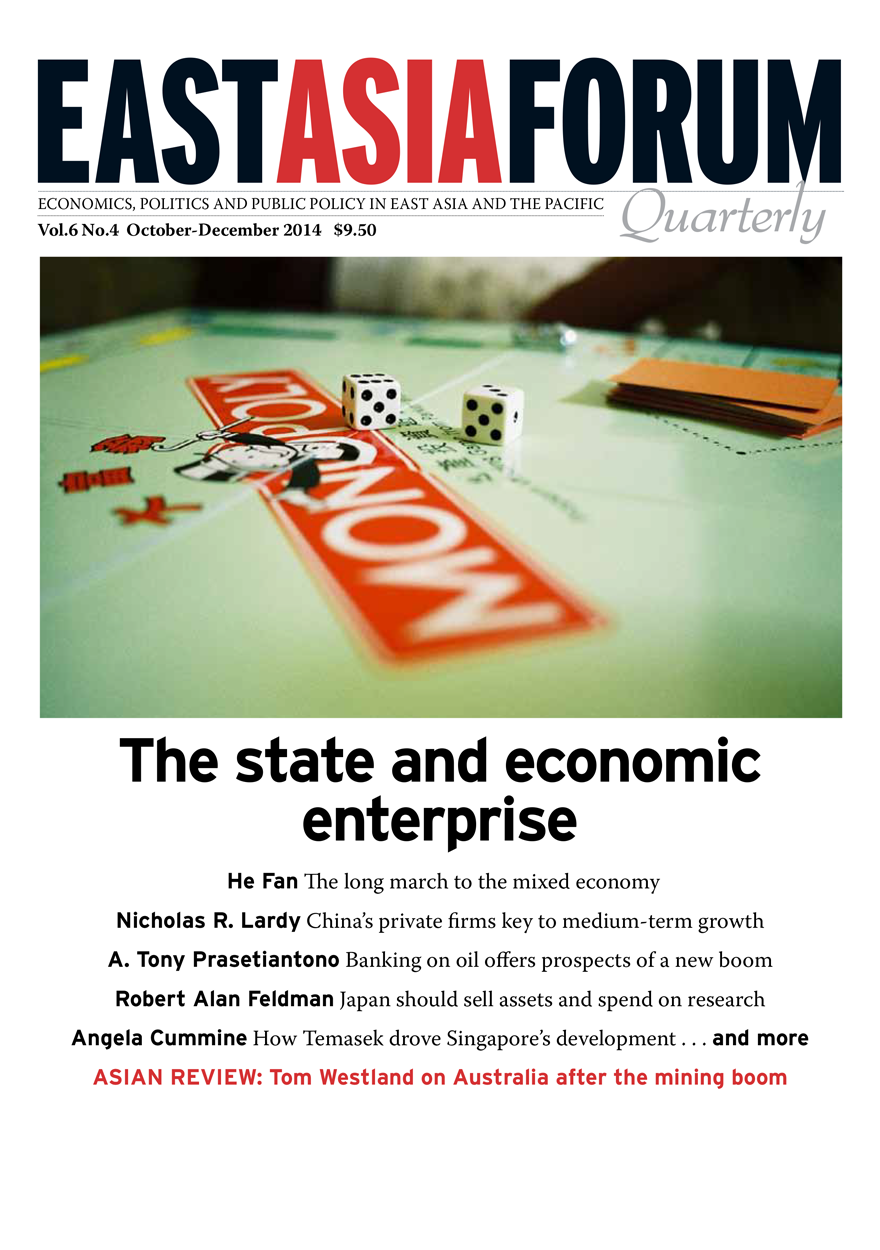
East Asia Forum Quarterly: Volume 6, Number 4, 2014 »
Publication date: November 2014
East Asia Forum Quarterly grew out of East Asia Forum (EAF) online, which has developed a reputation for providing a platform for the best in Asian analysis, research and policy comment on the Asia Pacific region in world affairs. EAFQ aims to provide a further window onto research in the leading research institutes in Asia and to provide expert comment on current developments within the region. The East Asia Forum Quarterly, like East Asia Forum online, is an initiative of the East Asia Forum (EAF) and its host organisation, the East Asian Bureau of Economic Research (EABER) in the Crawford School of Economics and Government in the College of Asia & the Pacific at The Australian National University.
Download for free
Not available for purchase
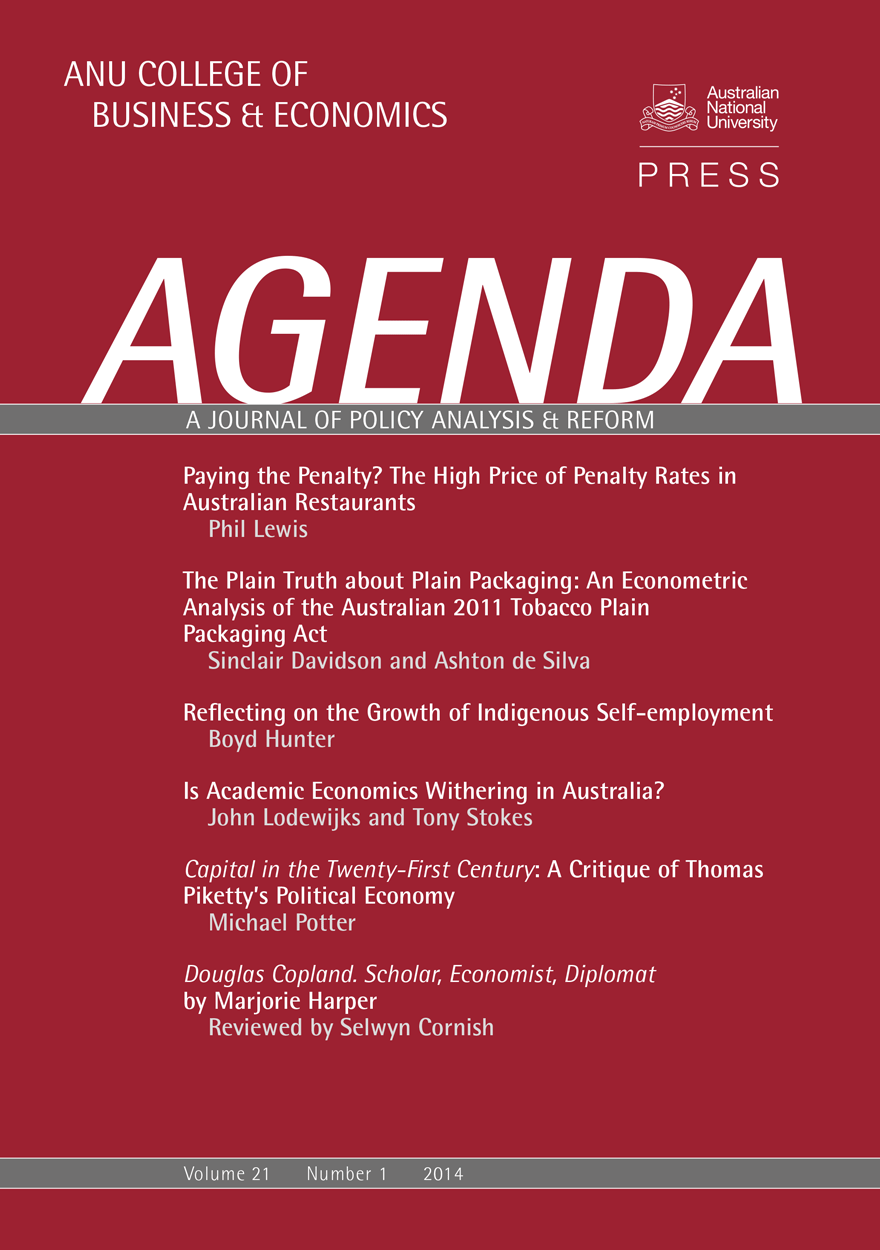
Agenda - A Journal of Policy Analysis and Reform: Volume 21, Number 1, 2014 »
Edited by: William Coleman
Publication date: November 2014
Agenda is a refereed, ECONLIT-indexed and RePEc-listed journal of the College of Business and Economics, The Australian National University. Launched in 1994, Agenda provides a forum for debate on public policy, mainly (but not exclusively) in Australia and New Zealand. It deals largely with economic issues but gives space to social and legal policy and also to the moral and philosophical foundations and implications of policy.
Subscribe to the Agenda Alerting service if you wish to be advised on forthcoming or new issues.
Download for free
Not available for purchase

Burgmann Journal- Research Debate Opinion: Issue 3, 2014 »
Publication date: November 2014
Burgmann Journal is an interdisciplinary, peer-reviewed publication of collected works of research, debate and opinion from residents and alumni of Burgmann College designed to engage and stimulate the wider community.
Download for free
Not available for purchase
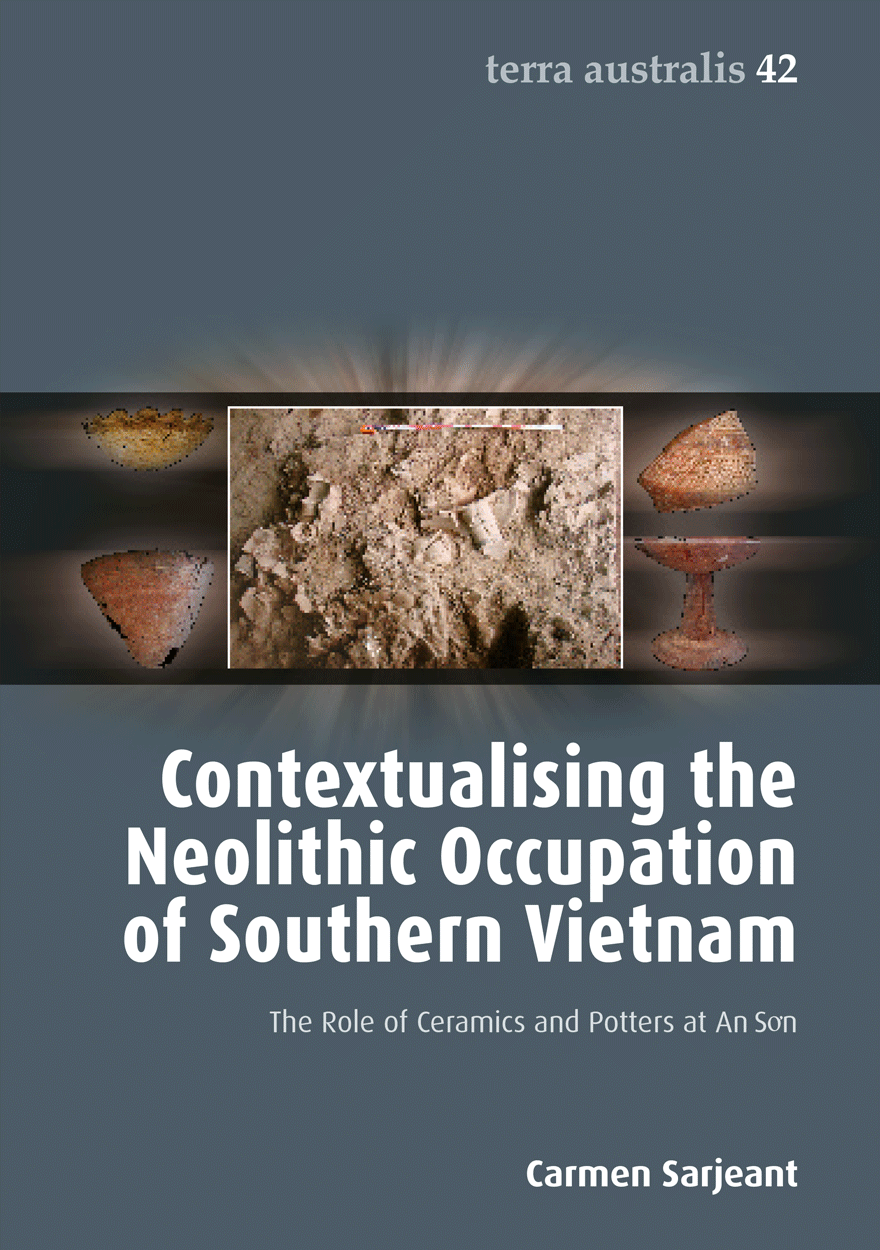
Contextualising the Neolithic Occupation of Southern Vietnam »
The Role of Ceramics and Potters at An Son
Authored by: Carmen Sarjeant
Publication date: November 2014
Excavated in 2009, An Son, Long An Province, southern Vietnam has been dated to the second millennium BC, with evidence for neolithic occupation and burials. Very little is known about the neolithic period in southern Vietnam, and the routes and chronology for the appearance of cultivation, domestic animals, and ceramic and lithic technologies associated with sedentary settlements in mainland Southeast Asia are still debated. The ways in which the ceramic material culture at An Son conforms to the wider neolithic expression observed in Southeast Asia is investigated, and local and regional innovations are identified. The An Son ceramic assemblage is discussed in great detail to characterise the neolithic occupation, while considering the nature of craft production, manufacturing methods and the transference of traditions.
Contextualising the neolithic in southern Vietnam is conducted through a comparative study of material culture between An Son and the sites of Bến Ðò, Bình Đa, Cù Lao Rùa, Cái Vạn, Cầu Sắt, Đa Kai, Đình Ông, Lộc Giang, Rạch Lá, Rạch Núi and Suối Linh, all in southern Vietnam. Another analysis is presented to contextualise An Son in the wider neolithic landscape of mainland Southeast Asia, between An Son and Ban Non Wat, early Ban Lum Khao, early Ban Chiang, early Non Nok Tha, Khok Charoen, Tha Kae, Khok Phanom Di, Nong Nor (phase 1), Samrong Sen, Laang Spean, Krek, Bàu Tró, Mán Bạc and Xóm Rền. The aspects of material culture at An Son that appear to have ancestral links are considered in this research as well as local interaction spheres.

Ngapartji Ngapartji »
In turn, in turn: Ego-histoire, Europe and Indigenous Australia
Publication date: November 2014
In this innovative collection, Indigenous and non-Indigenous scholars from Australia and Europe reflect on how their life histories have impacted on their research in Indigenous Australian Studies. Drawing on Pierre Nora’s concept of ego-histoire as an analytical tool to ask historians to apply their methods to themselves, contributors lay open their paths, personal commitments and passion involved in their research. Why are we researching in Indigenous Studies, what has driven our motivations? How have our biographical experiences influenced our research? And how has our research influenced us in our political and individual understanding as scholars and human beings? This collection tries to answer many of these complex questions, seeing them not as merely personal issues but highly relevant to the practice of Indigenous Studies.
I think this rich collection will become a landmark text and a favourite within Australian scholarship. I am keen to see it published so that I can recommend it to others
— Professor Emerita Margaret Allen, Gender Studies and Social Analysis, University of Adelaide
The idea was to explain the link between the history you have made and the history that has made you
— Pierre Nora
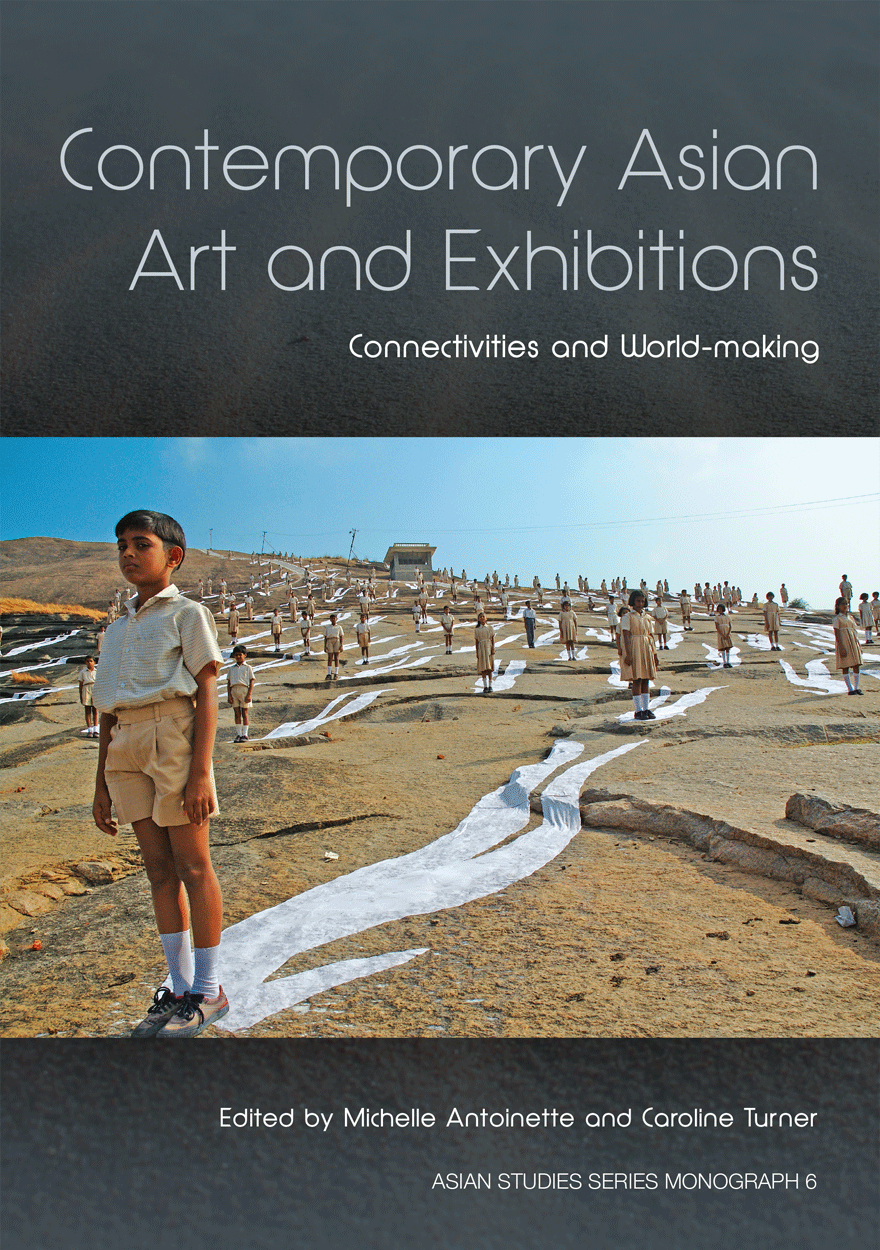
Contemporary Asian Art and Exhibitions »
Connectivities and World-making
Edited by: Michelle Antoinette, Caroline Turner
Publication date: October 2014
“… a diverse and stimulating group of essays that together represents a significant contribution to thinking about the nascent field of contemporary Asian art studies … Contemporary Asian Art and Exhibitions: Connectivities and World-making … brings together essays by significant academics, curators and artist working in Australia, Asia and the United Kingdom that reflect on contemporary art in the Asia-Pacific region, and Australia’s cultural interconnections with Asia. It will be a welcome addition to the body of literature related to these emergent areas of art historical study. ”
— Dr Claire Roberts, Senior Lecturer in Art History, University of Adelaide
This volume draws together essays by leading art experts observing the dramatic developments in Asian art and exhibitions in the last two decades. The authors explore new regional and global connections and new ways of understanding contemporary Asian art in the twenty-first century.
The essays coalesce around four key themes: world-making; intra-Asian regional connections; art’s affective capacity in cross-cultural engagement; and Australia’s cultural connections with Asia. In exploring these themes, the essays adopt a diversity of approaches and encompass art history, art theory, visual culture and museum studies, as well as curatorial and artistic practice.
With introductory and concluding essays by editors Michelle Antoinette and Caroline Turner this volume features contributions from key writers on the region and on contemporary art: Patrick D Flores, John Clark, Chaitanya Sambrani, Pat Hoffie, Charles Merewether, Marsha Meskimmon, Francis Maravillas, Oscar Ho, Alison Carroll and Jacqueline Lo.
Richly illustrated with artworks by leading contemporary Asian artists, Contemporary Asian Art and Exhibitions: Connectivities and World-making will be essential reading for those interested in recent developments in contemporary Asian art, including students and scholars of art history, Asian studies, museum studies, visual and cultural studies.



